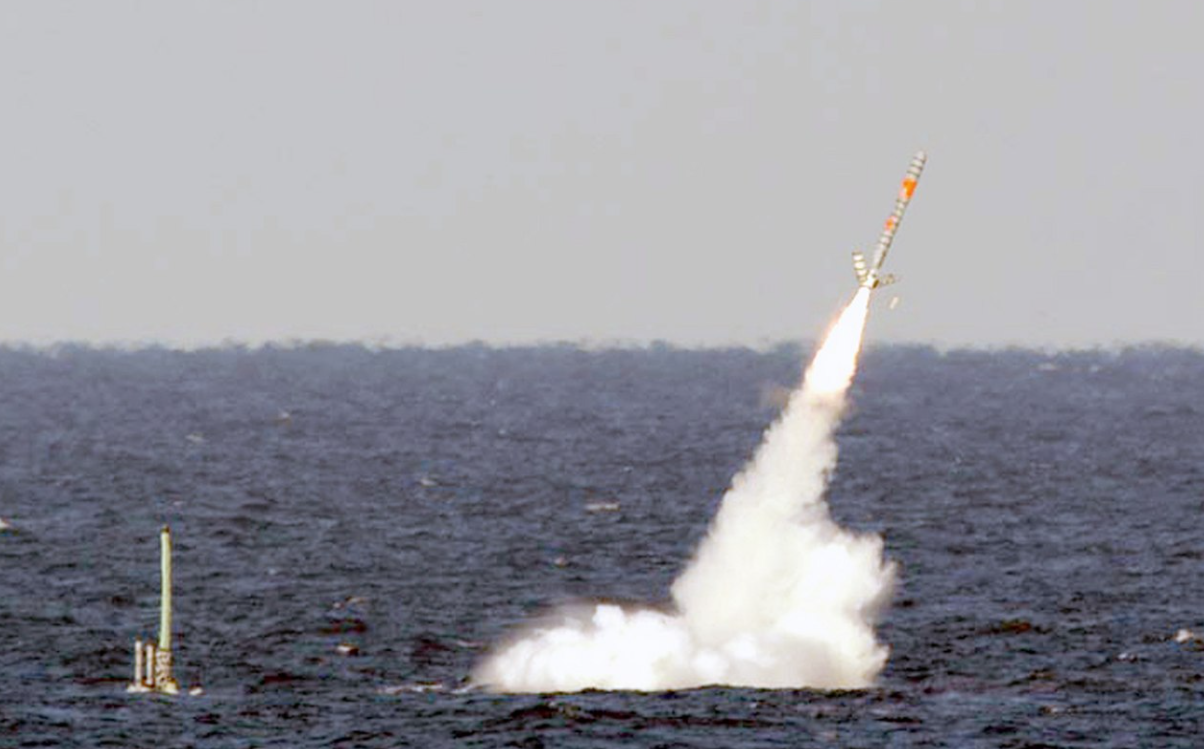May 12, 2023

The US Navy has announced it has dispatched a submarine carrying 154 Tomahawk cruise missiles to waters off the Islamic Republic. Sending a submarine to the area around Iran is nothing new or unusual but announcing it in advance is very unusual and appears to be an effort to intimidate the Islamic Republic.
The Islamic Republic responded by saying it had sent one of its small diesel-powered subs, Fateh, out to find the American USS Florida and the Iranian sub than forced the American sub to surface while it transited the Strait of Hormuz into the Persian Gulf. The US Navy then announced that the Florida had not entered the Persian Gulf, in effect calling the Islamic Republic a liar.
Iran announced its claim to have forced the sub to surface, which would be a first in the history of nuclear-powered submarines, just hours after the US Navy sailed a small drone boat into the Persian Gulf while Iranian vessels stood around and did notining. It is possible the regime made up the sub story in an effort to distract from its embarrassment over the unmanned boat.
Whenever the US Navy sends an aircraft carrier to Persian Gulf, it is always accompanied by a host of other ships, including at least one nuclear-powered sub. But it is the carrier, not the sub or other ships, that gets all the attention. The US Navy is more focused on the Far East and the Chinese threat to Taiwan now, and is no longer regularly deploying carriers off Iran. That may be the reason the US Navy announced the sub’s deployment this time.
There is no big secret when subs go to the area. They must surface to transit the Suez Canal. But subs sometimes come to waters off Iran from the Pacific and aren’t seen. The US announced the deployment of the USS Florida to the waters off Iran as the sub entered the Suez Canal on the surface April 8. Iran seems to have assumed the Florida just immediately went into the Persian Gulf.
Iran said the US sub entered Iranian territorial waters, but exited when warned by the Iranian sub. The lane for shipping entering the Persian Gulf goes through Iranian territorial waters, but the shipping lane is an international passageway and Iran has no say about it. If a ship tried to avoid the international shipping lane, it would be a threat to ships in the adjoining shipping lane exiting the Persian Gulf, which is in Omani territorial waters.
The Iranian Navy said its sub forced the Florida to surface and then the Florida “changed course with an escort and continued on its way” into the Persian Gulf. But US subs do not travel with an escort, which would give away the sub’s presence.
The US Navy’s Fifth Fleet in Bahrain said, “The [Iranian] claim represents more Iranian disinformation that does not contribute to regional maritime security and stability.” The Islamic Republic regularly declares that its Navy brings security and stability to the region.
The Iranian Navy also failed to say how it “forced” the US sub to surface. US sailors said the only way to “force” a sub to surface is to attack and damage it.
The claim of confronting the US submarine was made by the Iranian Navy, not the Pasdar maritime arm. The US Navy has usually had professional dealings with the Iranian Navy, unlike its relationship with the Pasdar maritime arm.
Iran’s Fateh sub is very small compared to the USS Florida. The Fateh is 157 feet long versus 560 feet for the Florida. In terms of displacement, the Florida weighs in at 17,000 tons or 28 times the 600-ton Fateh.
US nuclear subs go under the surface shortly after leaving port and do not normally surface except to enter port or transit a canal. All American submarines are nuclear-powered and can easily remain below the surface for six months, the length of time a crew is normally assigned to nuclear subs. Each sub has two crews that are rotated every six months.
Some news reports falsely said the US Navy was sending a ballistic missile submarine carrying missiles with nuclear warheads to the region. But that was in error. The Navy dispatched the USS Florida, which carries 154 Tomahawk cruise missiles. Each Tomahawk has a non-nuclear warhead with 1,000 pounds of explosive.
The Tomahawks became famous during the 1991 war against Iraq when the Navy released photos of Tomahawks entering targeted buildings through doors and windows. The Tomahawk’s guidance system is highly accurate. The missile flies below the speed of sound, but also flies at such low altitude that it is very hard for anyone to knock out the missile. The Tomahawk flies “nap-of-the-earth, meaning that its guidance system reads the presence of hills and trees and flies just above tree level, rising for hills and then descending again when a hill is crossed.
In Tehran, Foreign Ministry spokesman Nasser Kanani dismissed the news of the submarine deployment, saying, “Periodic reports about [the US] dispatching a submarine, moving warships or sending bombers to West Asia under conditions when the new regional equations point to the emergence of a new order in which there is no need for extra-regional military forces are part of the US government’s attempt to cover up the decline of its global power.” The meme of declining US power has become a fixture of Iranian state rhetoric since China brokered a deal between Iran and Saudi Arabia to resume diplomatic relations.
























